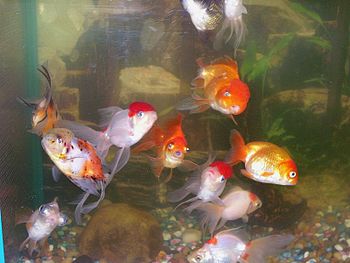 |
| A picture of a male Bosemani Rainbow fish. (Photo credit: Wikipedia) |
Are you looking for a low maintenance fish that is nevertheless vibrant and exotic? If this sounds like you, then the rainbow tropical fish is the perfect choice for you. This sadly overlooked species is a mellow little animal that is ideal for beginner and veteran aquarium keepers alike.
Why is the rainbow tropical fish such a rare find? This is largely because many fish stores sell fish as juveniles or babies. Rainbow tropical fish don't tend to get their vibrant colors until their much older-as young fish they tend to be brownish green. These school dwelling fish show their colors when attracting mates. Unlike much tropical fish, they show no signs of aggression when other males are in the tank. Having a female or two will be ideal for breeding as well.
However, when choosing fish for your tank, be sure not to overcrowd them. While these are relatively small fish, they're still a school dwelling species that needs lots of room to roam. If you are unsure as to which animal to include with your school, try asking your local fish store.
Along with being beautiful, rainbow tropical fish are able to get along with a wide variety of aquarium fish. Oftentimes the problem is finding tropical freshwater fish that will be compatible with the rainbow fish; even tetras are known for nipping fins every so often. Some equally relaxed fish include guppies, angelfish, rasboras, and loaches. In addition to being a very mild tempered animal, they're relatively hearty as well, making them ideal fish for beginning tanks.
Some other things to remember when raising rainbow fish is the composition of your tank. Be sure to include lots of places for your fish to hide or sleep. These include broad-leafed plants, large rocks, and pieces of driftwood. Being naturally shy creatures, rainbow tropical fish need places for privacy and will lose their natural colors if overstressed.
Additionally, like most fish, rainbow fish are sensitive to extreme water changes. When caring for this species, be sure to have a quality water testing kit on hand. This allows you to check the levels of ammonia, nitrate, calcium, and other substances. In addition to this, having a high-quality heater and thermometer can't hurt either. There are even brands of heaters that have a memory setting, allowing you to keep the tank's temperature from fluctuating.
These are only a few things to consider when caring for a rainbow tropical fish. By being patient and diligent, you will be able to see just how much these tiny creatures can brighten up any tank. Learn more today!
|






